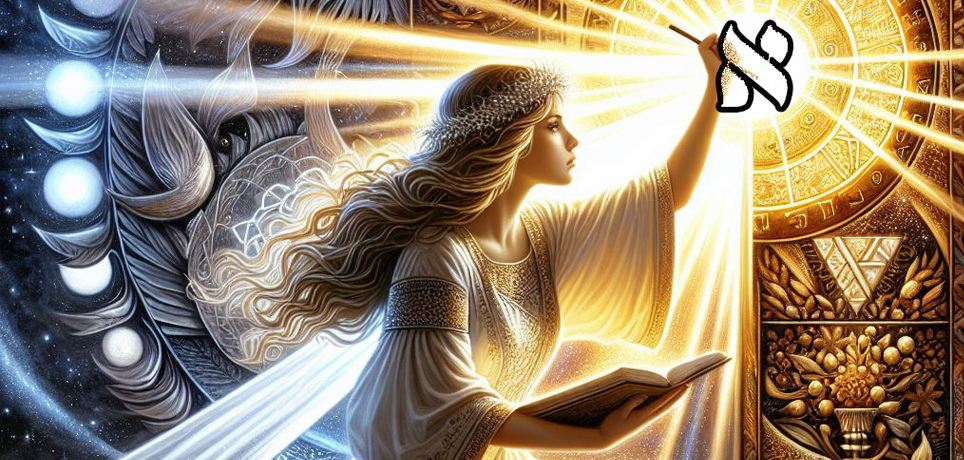
By examining “Neum: The Oracle or the Declarations, Chapter One” through a Kabbalistic lens, this study guide invites you to explore profound themes such as Divine unity, prophecy, spiritual ascent, the governance of creation, and the process of healing and restoration. The reflection and exploration questions encourage deeper engagement with the mystical ideas in the text, fostering both personal and communal growth, should you choose to use this guide for group discussions. Readers are encouraged to move beyond theological learning and engage in Neum’s words through righteous actions, the works of God.
Exploration Questions
1. The Nature of Divine Dominion and Providence:
- The text emphasizes that “YHVH has dominion over the whole of creation” and “by the providence of YHVH is the creation governed.” How might this relate to the Kabbalistic idea of Malkhut (sovereignty) and Chochmah (wisdom), which guide the world?
- How does the concept of divine governance connect to the Sephirot (Tree of Life) and the way in which divine light flows through creation to sustain it?
2. The Role of Israel as a Chosen People:
- The text speaks of Israel being crowned with holiness and set apart by YHVH’s Torah. In Kabbalistic thought, how is Israel understood as a vessel for the Divine Light of Christ? How might this text reflect the role of Israel in the spiritual redemption of the world, especially in relation to the concept of Keter and Malchut?
- How does Israel’s role as a holy people align with the Kabbalistic idea of Tikkun Olam, where Israel is the vehicle for bringing about the repair of the world (the restoration of all things)?
3. The Path of Ascent:
- Neum speaks of Israel ascending to become a holy people. In Kabbalah, this idea of ascent is often associated with the concept of Aliyah (ascending spiritually). How might Israel’s spiritual ascent through Torah study and mitzvoth (instructions) be connected to the mystical ascent through the Sephirot toward the En Sof?
- How does the path of ascent connect with the idea of Zivug (spiritual coupling) and the union of the soul with the Divine?
4. Healing and Divine Mercy:
- The Oracle promises healing and protection through YHVH’s mercy. How does this reflect the Kabbalistic understanding of Chesed (mercy) as a force that flows through the Sefirot to heal and restore balance in creation?
- In the Kabbalistic framework, healing is not only physical but spiritual. How does the promise of healing for Israel correspond to the spiritual purification process described in Kabbalistic teachings, particularly through the principles of Teshuvah (return or repentance) and Tikkun (repair)?
5. The Mystery of Creation and the Wisdom of YHVH:
- Neum speaks of a “profound mystery” being revealed about the nature of creation and wisdom. How might this relate to the Kabbalistic concept of the PaRDeS (the four levels of Torah interpretation: Peshat (the simple or literal meaning), Remez (the allegorical or symbolic meaning), Derash (the moral, ethical, or spiritual meaning), and Sod (the secret or mystical meaning), particularly the mystical or Sod level, where deeper, hidden truths are revealed?
- How does the mystery of creation relate to the concept of Chochmah (wisdom) and Da’at (Knowledge) in Mormon Kabbalah, which together bring forth the creation of the world?
Application Activities:
1. Contemplating Divine Unity:
Activity:
Spend some time meditating on the Oneness of YHVH. Try to see the interconnectedness of all things in your environment.
Reflection:
How can this practice lead to spiritual healing and transformation in your life?
2. Heart as a Channel for Divine Wisdom:
Activity:
Reflect on the idea of the open heart receiving spiritual knowledge.
Discussion:
Share with a group ways that you have felt the Divine “descending” into your life and helping you rise above challenges.
3. Practical Tikkun Olam:
Activity:
Consider how your actions can contribute to healing the world around you, whether through acts of kindness, healing, or social justice.
Reflection:
The Oracle speaks of healing and redemption. How can you engage in Tikkun Olam in your own life?
4. Mystical Exploration:
Activity:
Choose one mystical teaching from the text (such as the stars shining or the path of remembrance) and explore it more deeply in your personal spiritual practice.
Reflection:
Meditate on or discuss with a group how this teaching can help you move closer to your own divine purpose?
5. Exploring Prophecy and Vision:
Activity:
Practice “visionary” writing. Spend time journaling your thoughts and ideas as though you are receiving divine wisdom, just as the Oracle does.
Reflection:
Consider the ways in which this form of writing or meditation can deepen your spiritual practice.